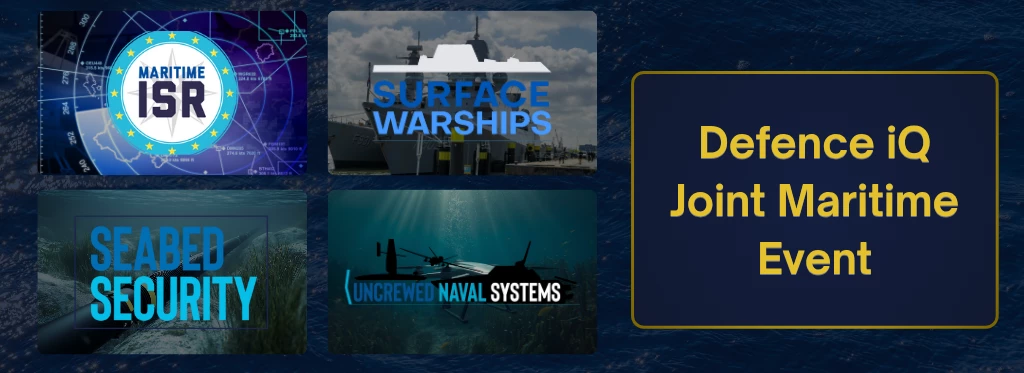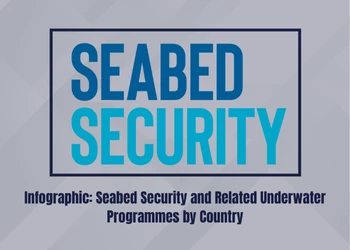A Cultural Sea Change: Reflections on Surface Warships & Naval Power in the Digital Era
Add bookmark
Excuse the maritime pun, but I couldn’t resist. Truly, as was demonstrated at Defence iQ’s annual Surface Warships conference this week (28-30 Jan 2020), the naval community is going through something of a cultural sea change, which is largely driven by the perceived strategic complexities shaping today's maritime environment, the shift towards Great Power competition and, as described by the event chairman Admiral Sir James Burnell-Nugent (Ret), “digitization, innovation and new technologies”.
For the conference, this meant moving the conversation on from a focus on the traditional elements of naval power (hardware, hulls) towards the inclusion or even prioritisation of new digital technologies and software-centred capabilityies (autonomous vehicles, data analytics, etc).
For the naval community as a whole, this means a whole-of-force cultural shift underpinned by innovative practice, creative thinking and digitally-enhanced processes.
Innovation as the Strategic Enabler?
Threatening technological advantages like autonomous vehicle swarming, hypersonic missiles, and directed energy weapons, the broader militarisation of the deep ocean and rising Chinese and Russian investment into its naval fleets presents NATO allies and partners with what “could be an even greater test than during the Cold War,'' said conference speaker Vice Admiral Richard Brown, Commander Naval Surface Force, U.S. Pacific Fleet. Against this backdrop, naval leaders are reviewing and adapting their approaches to acquisition, doctrine, training, sustainment and mission command.
On the subject of acquisition, the opening keynote from Hon. Alan Shaffer, Deputy Under Secretary of Defense for Acquisition and Sustainment, U.S. Department of Defense, was a fascinating insight into how procurement culture can adapt to new technological and strategic realities. This is reflected in a cultural and organisational remodelling of the way the U.S. DOD writes requirements, manages risk and delivers capability.
“Too often,” argued Hon Shaffer, “we try to make things perfect in a long space of time, rather than functional in a short space of time.” By over-specifying requirements and working towards ‘perfection’, the acquisition community (which was/is largely dominated by cultures of risk aversion or, alternatively, the deliberate pursuit of large, lengthy acquisition programmes for prestige and budget) is not able to field capabilities at the speed of relevance.
To overcome this challenge, the U.S. DOD is “enabling innovative acquisition”, underpinned by a safe and secure Defence Industrial Base, rapid experimentation and fielding, software development, digital engineering, cyber-secure systems, and a streamlined acquisition model.
Vice Admiral Brown, Commander, Naval Surface Forces/Commander, Naval Surface Force, U.S.Pacific Fleet, also highlighted rapid testing and evaluation as core enablers of advantage in the digital era. “Now is our time to try the hard things,” said the Admiral: aggressive experimentation, instilling a warfighting edge into crews, and new approaches to warfare tactics. One such initiative forming part of this new experimentation construct is the Surface Development Squadron - enabling the U.S. Navy to experiment with unmanned vessels and new weapons to simply “see what works, and what doesn't.''
There was a common recognition amongst conference delegates that the naval community haven’t quite fully exploited unmanned surface and undersea vehicles to their full potential yet, and a myriad of reasons (legal, budgetary, cyber, connectivity) were cited as to why. Outside of perceived or actual challenges, however, Pat Holub of Raytheon reminded us all to try and adopt the mantra of Rear Admiral Wayne E. Meyer: “Build a little, test a little, learn a lot”.
Be Creative, Go Quicker
This cultural shift is also impacting training in acquisition and programme management. There are changes being made to acquisition level certification and new credentials that focus on software development, digital engineering fluency and open systems are being adopted to ensure that the future generation of acquisition professionals are prepared to succeed in a Digital Future. In short, the Undersecretary announced. the DOD’s mission is to “be creative, go quicker”. Easy, right?
Nevertheless it was encouraging to hear from industry who are, too, very much part of this cultural sea change. Vice Admiral Peter Hudson (Ret) of BAE Systems acknowledged that “the tools by which we deliver maritime capability are changing”, and original equipment manufacturers, in particular, must be ready to embrace new technologies to ensure that they can keep pace with emerging disrupting technologies and new software and deliver capabilities to the warfighter much faster and more cost-effectively.
One way industry is embracing new technologies to deliver for Defence is through the digitization of its design, engineering, manufacturing, and support processes. BAE, for example, now has ‘digital twins’ for each of their ships, and their development of Australia’s first digital shipyard has been widely reported.
Babcock’s iSupport 360 is another great example of a real willingness to incorporate digital technologies and innovative practices into their organisational cultures and processes. The 360 framework incorporates people, life cycle engineering, systems engineering integration, structured and secure data, and, notably, transformational culture, behaviours and collaboration. All of which, combined, demonstrated a refreshing approach to government-military partnership in the Digital Era.
The conference, featuring keynotes from the First Sea Lord as well as a number of NATO nation flag officers, was themed on ‘Naval Power in the Digital Age’. There is, of course, a propensity for eye rolling when buzzwords like digital transformation, innovation, adaptation and agility are talked about in forums such as these. Lack of significant investment in innovation still stymies progress and limits optimism, however the Naval community has no doubt embraced digital transformation and is working to create an architecture that can support and adapt to continuous innovation in the future.
Indeed, as Rear Admiral Andy Burns, Assistant Chief of Staff (Capability), Royal Navy, explained on Day Two of the event, the Navy faces “not an inflection point, but a continuum of change”.























